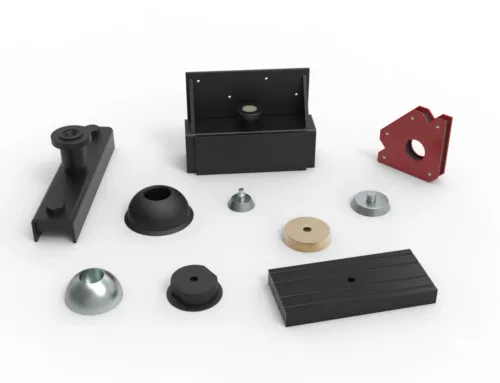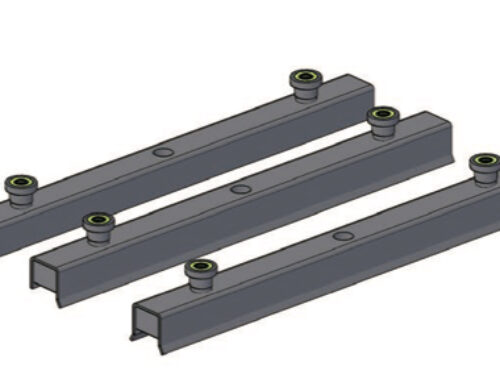Magnets are everywhere—from the tiny components in your phone to massive machines powering industries. But did you know there’s a whole world of cool facts about magnets that most people don’t realize? Whether you’re a student, tech enthusiast, or just curious about how magnetism shapes our world, this post will open your eyes to some surprising truths about these invisible forces.
At NBAEM, a leading magnetic material supplier in China, we’ve seen firsthand how magnets go beyond science class and into everyday life and cutting-edge technology. Ready to discover how magnets work, why they’re so powerful, and how they’re made? Let’s dive in!
What Are Magnets Quick Science Refresher
Magnets are objects that can attract certain metals, like iron, nickel, and cobalt, because of a force called magnetism. This force is created by the movement of charged particles—mainly the electrons in atoms. In magnetic materials, many of these electrons spin in the same direction, creating a combined magnetic effect strong enough to influence other materials nearby.
Types of Magnets
There are two main kinds you’ll hear about:
- Permanent magnets – These keep their magnetism over time and don’t need any external power source. A fridge magnet is a simple example.
- Electromagnets – These create a magnetic field only when electricity flows through them. They’re found in things like doorbells, speakers, and industrial cranes.
How Magnets Generate Magnetic Fields
In the simplest terms, magnetic fields are invisible areas around a magnet where magnetic forces can be detected. They are created when the electrons inside the atoms of a material move or spin in a coordinated way. In permanent magnets, this alignment stays in place, while in electromagnets, it appears only when an electric current is flowing.
If you’ve ever sprinkled iron filings around a magnet and seen them form curved lines, you’ve actually visualized the shape of a magnetic field—and that’s the real magic behind how magnets work.
Cool Historical Facts About Magnets
Magnets have been around much longer than most of us realize. The earliest magnets were natural minerals called lodestones — pieces of magnetite that could attract iron. People in ancient Greece and China discovered them thousands of years ago, and the name “magnet” likely comes from the Greek region of Magnesia, where these stones were found.
Early civilizations quickly found practical uses for magnets. Chinese sailors were among the first to use lodestones for navigation, creating primitive compasses to guide ships long before GPS. In some ancient cultures, magnets were also believed to have healing powers and were used in early forms of medicine, though these claims were more folklore than proven science.
As time went on, understanding magnetism helped fuel major technological advancements. The discovery and study of magnetic fields influenced the invention of the electric generator, motors, and telecommunication systems. Without magnets, we wouldn’t have modern power grids, audio equipment, or even many everyday electronics that Americans rely on today.
Fascinating Properties of Magnets
Magnetic Poles and How Attraction Works
Every magnet has two poles — a north and a south. Opposite poles attract, while like poles push away from each other. This is why if you try to push two north poles together, you’ll feel that invisible “force” resisting.
How Magnets Lose Their Strength
Magnets aren’t permanent forever. They can weaken over time due to:
- High heat (above a certain point, they lose alignment)
- Physical damage (dropping or hitting them)
- Strong opposing magnetic fields
You can slow this down by storing magnets away from extreme heat and keeping them away from other strong magnetic sources.
Strongest Magnets and What They’re Made Of
The most powerful magnets used today are rare earth magnets, especially neodymium magnets. They’re much stronger than regular iron or ceramic magnets and are widely used in everything from hard drives to electric car motors.
The Curie Point and Temperature Effects
Every magnetic material has a Curie temperature — the point where it loses its magnetism completely. For example, neodymium magnets lose their magnetic power at around 310–400°F. That’s why high heat is one of a magnet’s worst enemies.
Unusual and Fun Magnet Facts
Magnets aren’t just for sticking notes to the fridge — there are some surprising things they can do. Here are a few magnet facts that might catch you off guard:
Applications of Magnets in Daily Life and Industry
Magnets aren’t just for science experiments — they show up in places we use every day without even realizing it. In homes, you’ll find them in speakers for clear sound, inside refrigerator doors to keep them sealed shut, and even in credit and debit cards where magnetic strips store important data. Most modern phones, laptops, and headphones also rely on small, powerful rare earth magnets to keep them slim but functional.
In industry, magnets are essential. MRI machines use very strong magnetic fields to create detailed images of the body for medical diagnosis. Magnetic separators remove metal contaminants in recycling plants, food processing lines, and mining operations. In manufacturing, magnets are part of motors, sensors, and precision tools used to keep production lines running smoothly.
Magnets also play a role in supplying materials for multiple sectors. Neodymium and samarium-cobalt magnets are in high demand for electronics, aerospace, and renewable energy systems. Reliable magnetic material suppliers provide these to manufacturers across the U.S., ensuring high quality for critical applications.
When it comes to emerging technologies, magnets are leading the push for cleaner energy. They’re a key part of wind turbines, electric vehicle motors, and even wireless charging systems (see how magnets are used in wireless charging). With advancements in high-temperature magnets (learn more about magnets that can withstand heat), new tech is becoming more efficient and longer-lasting.
How Are Magnets Made Insight into Manufacturing
Making magnets isn’t just about shaping metal — it’s a mix of precision, the right materials, and strict quality control. The exact process depends on the type of magnet, but most go through these general steps:
Simple Magnet Production Process
- Material prep – The base materials, like iron, cobalt, or rare earth elements such as neodymium, are measured and mixed in exact ratios.
- Forming – The material is melted or pressed into shape, depending on the magnet type. For example, powdered metals are often pressed into molds.
- Magnetizing – Once cooled and shaped, a strong magnetic field is applied to align the atoms, locking in their magnetic properties.
- Coating or finishing – Magnets are often coated (nickel, epoxy, or other finishes) to prevent corrosion and improve durability.
Why Material Quality and Precision Matter
- Cheap or impure materials produce weaker magnets.
- Tiny flaws in shaping or alignment can reduce magnetic strength.
- Rare earth magnets, like neodymium, require exact manufacturing standards to reach maximum power and longevity.
The Role of Expertise and Quality Control
Top magnetic material suppliers use:
- High-precision tools to keep dimensions exact.
- Rigorous testing to check pull force, temperature limits, and resistance to demagnetization.
- Consistent production techniques to meet both consumer and industrial needs.
If you’re sourcing for manufacturing or technology projects, working with an experienced magnetic material supplier is crucial — especially when selecting between materials like samarium cobalt vs. neodymium magnets (see detailed comparison here).
Myths and Misconceptions About Magnets
Not All Metals Attract to Magnets
One of the biggest myths is that magnets stick to any metal. In reality, magnets only attract certain metals like iron, nickel, and cobalt. Many common metals, such as aluminum, copper, gold, and silver, aren’t magnetic at all. For example, your aluminum soda can won’t stick to a magnet, but a steel one will.
Magnets Aren’t Dangerous Unless Misused
Another misconception is that all magnets are risky to have around. Small fridge magnets are harmless, but strong rare earth magnets like neodymium can be powerful enough to pinch skin, damage electronics, or even shatter if they snap together.
Safety Facts to Keep in Mind
- Avoid direct contact with electronics — strong magnets can erase data on credit cards and mess with phone compasses.
- Keep away from pacemakers or medical implants, since magnetic fields can interfere with them.
- Handle large magnets carefully — their force can cause injuries if fingers or skin get caught.
- Store them separately in padded containers to prevent accidental damage.
How to Test and Use Magnets Safely
Simple DIY Experiments
You don’t need a lab to explore magnetic properties—just basic items at home or school. A few easy ideas:
- Paperclip test: See how many paperclips a magnet can lift. Try different types of magnets and compare results.
- Magnet and compass: Move a magnet near a compass and watch the needle shift, showing the magnetic field.
- Through-material test: Place thin materials like cardboard or plastic between a magnet and metal to see if the pull still works.
- Make a simple electromagnet: Wrap insulated copper wire around a nail, connect it to a battery, and test what it can pick up. (Adult supervision required.)
For more ideas, check out this guide on 10 uses of magnets to explore everyday applications.
Guidelines for Handling Strong Magnets
Some magnets, especially rare earth magnets like neodymium, are incredibly powerful and need careful handling.
- Keep fingers clear: Strong magnets can pinch hard if they snap together.
- Avoid electronics: Keep them away from credit cards, phones, and hard drives to prevent data loss.
- Protect surfaces: They can chip or break if they slam into metal or another magnet.
- Store with spacers: Place a non-metal separator between stored magnets.
- Child safety: Keep small magnets out of reach—they can be dangerous if swallowed.
- Eye protection: Wear safety glasses when testing big or strong magnets to prevent injury from flying debris.





Leave A Comment